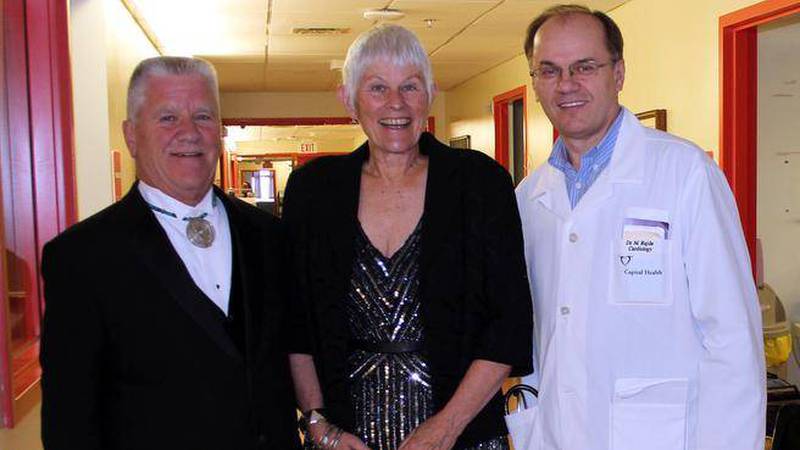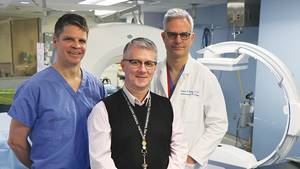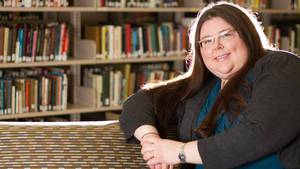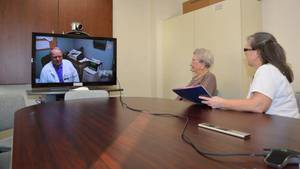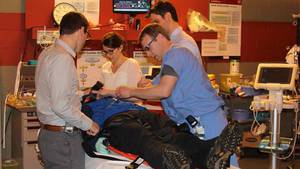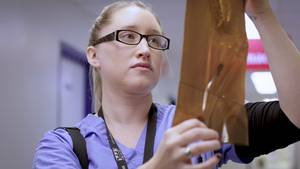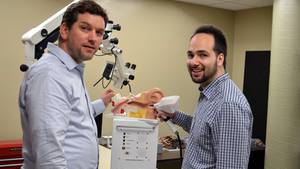When her instincts told her something wasn’t right with Bruce, Ann Radcliffe listened. On their way to the airport last fall, they made a last-minute stop at the QEII Health Sciences Centre.
With their bags packed for the lavish, family wedding they were heading to in Texas, Ann was determined to have a heart specialist investigate the chest pains her partner, Bruce Forcey, was having before they boarded the plane. Ann didn’t want to take any chances — even if it meant missing her nephew’s dream wedding on a ranch surrounded by 400 family members and friends.
“Bruce was adamant that we were going to go to Texas,” says Ann. “He kept telling me, ‘I’ll be alright.’”
At the QEII, Bruce was given a pre-arranged stress test and the results weren’t good.
“I failed it miserably,” he says.
Cardiologist Dr. Miroslaw Rajda delivered the disappointing news that they would have to cancel their trip scheduled for the following morning.
“He said: ‘Bruce, you’re in bad shape.’ I was pretty frightened at that point,” says Ann.
Bruce was immediately transferred to the cardiology care unit by Dr. Rajda. Having known that something wasn’t right with his health, but not wanting to admit it was anything serious, Bruce felt some relief knowing he was finally getting help. “I kept pushing on” said the 68-year-old retiree. An avid golfer who once played up to five times a week near his home in Cornwallis Park, N.S., Bruce had considered giving up the game because of his low energy.
Dr. Rajda ordered a dye test. The results were worse than Bruce or Ann could have imagined. Bruce had five clogged arteries.
“I had to be fixed immediately,” says Bruce.
Amidst their fear and disappointment, Ann decided they needed to maintain their optimism and sense of humour before Bruce underwent major surgery. Having arrived at the hospital with only their formal wedding attire and Bruce’s hunting gear for a scheduled pig hunt in Texas, Ann didn’t want to miss the chance to see her partner handsomely dressed in his tuxedo. So Ann put on her elegant gown, got Bruce dressed and asked if they could be photographed on the cardiology unit with Dr. Rajda. When Ann emailed the photo to her sister in Texas, she was thrilled.
“I’d never been escorted by a man in a tuxedo anywhere,” says Ann. “I’m 70 years old. It was a long time coming.”
The “big show,” as Bruce calls it, took place on a Monday morning at 7:30 a.m. While Bruce underwent a triple bypass operation, which kept him in the operating room for more than seven hours, Ann waited anxiously nearby. With help from a surgical liaison nurse she was kept up to date every 90 minutes on his progress.
“She would tell me exactly what was going on. It just reduced the anxiety. It was so good,” says Ann.
“The moral of the story is — if we had gone to Texas who knows what would have happened,” says Bruce. “People shouldn’t complain too much about the healthcare system. When I needed something done, it got done. I’m delighted.”
With Bruce recovering at home now, Ann says she never once doubted the level of medical expertise and attention given to her partner during his health crisis. But what struck her above all was the personal care they both received when they needed it most.
“It’s the people who make the difference,” she says. “Everyone at the QEII was fantastic.”

